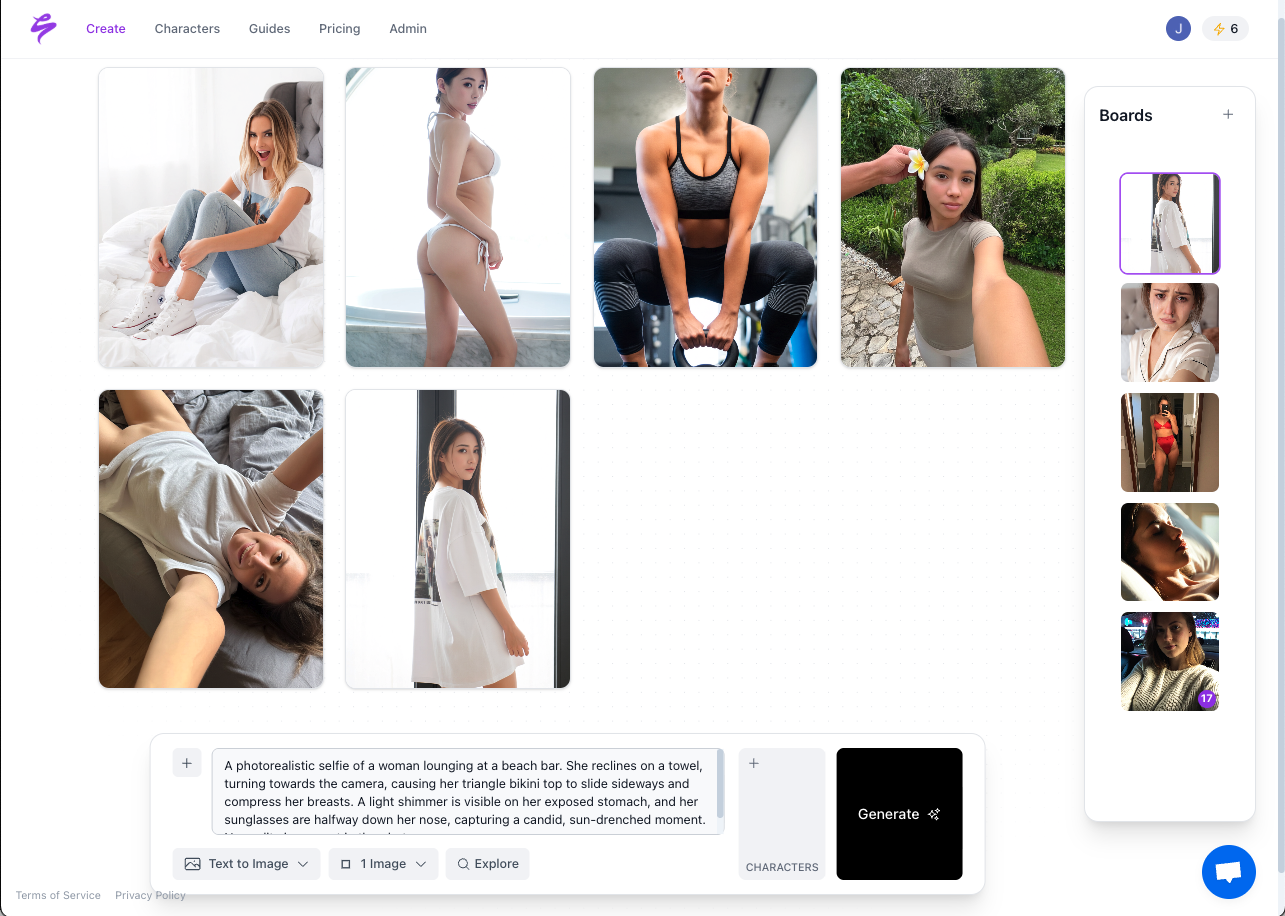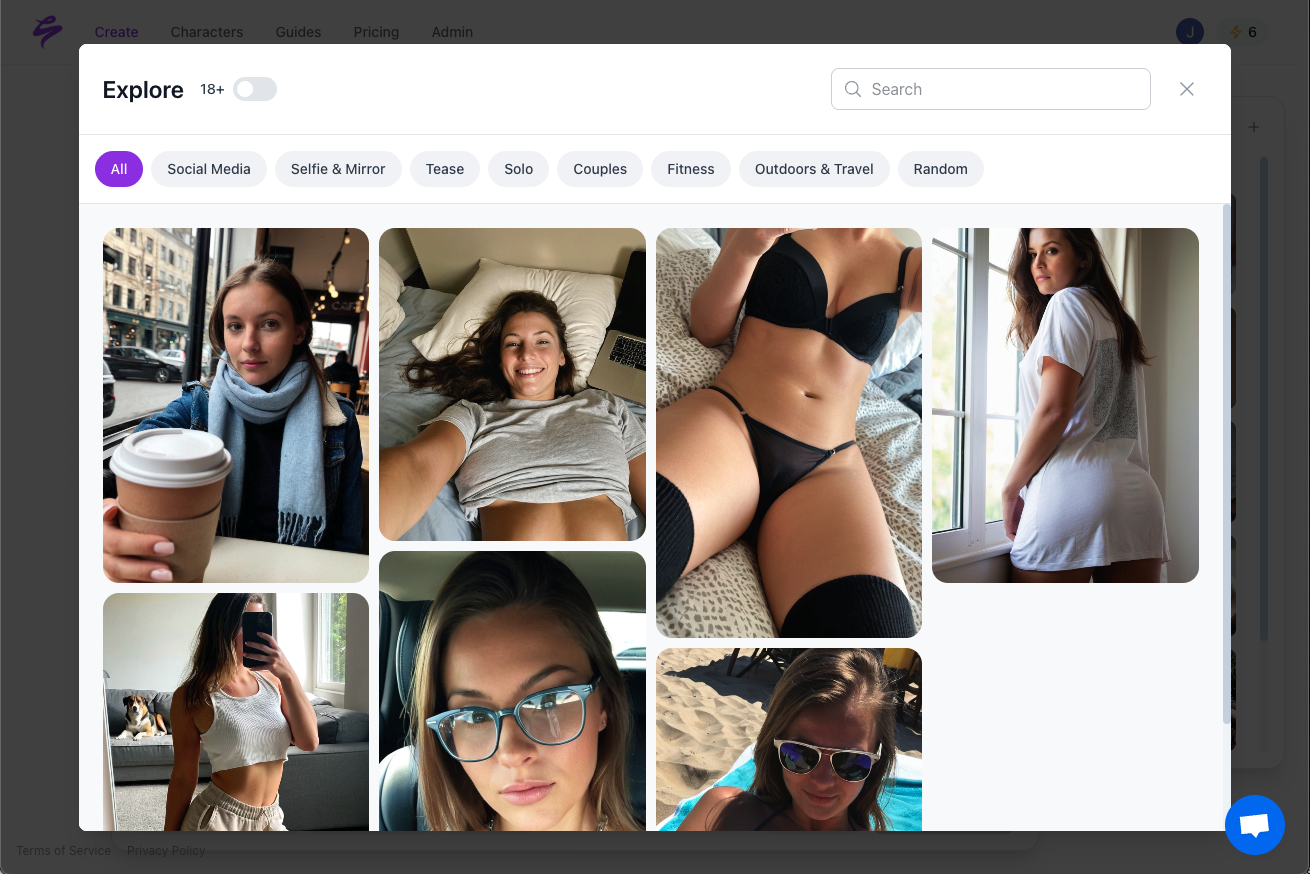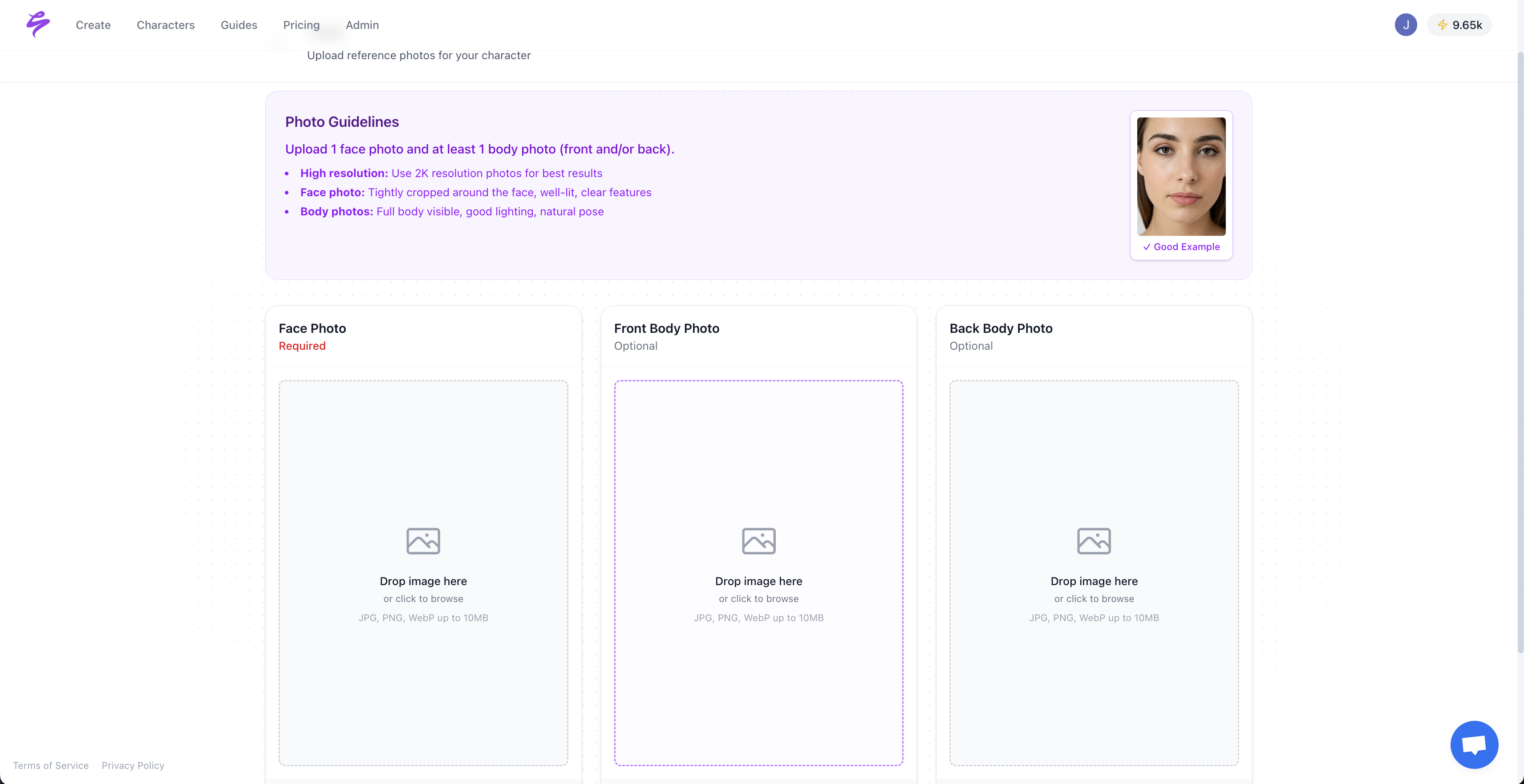Key Takeaways
- Creators and agencies face growing content demands that outpace traditional production, which leads to burnout, higher costs, and missed opportunities.
- AI photo animation tools help turn still images into engaging video content, allowing marketers to scale output without constant shoots.
- Four main tool categories serve different needs: general-purpose social tools, advanced AI image-to-video platforms, enterprise animation suites, and specialized AI studios for monetizable creators.
- Key evaluation criteria for marketers include realism, ease of use, scalability, monetizable workflows, privacy controls, and long-term business value.
- Specialized AI content studios, such as Sozee, focus on hyper-realistic likeness, SFW-to-NSFW workflows, and creator monetization needs.
- Choosing the right category of tool can reduce creator burnout, support reliable revenue, and turn content production into a strategic advantage.
The Creator Economy’s Content Challenge: Why Photo Animation Matters
The modern creator economy runs on a simple equation: more content often leads to more traffic, sales, and revenue. Creators, however, face constant pressure to deliver fresh, engaging posts across platforms such as TikTok, Instagram, and OnlyFans. The gap between what audiences expect and what creators can physically produce has created a growing content crisis.
Traditional content production hits multiple bottlenecks, including time constraints, production costs, logistics coordination, and creator burnout. A single photo shoot might yield content for a week. Audiences, by contrast, expect daily posts, custom requests, and fast responses to trends. This imbalance forces creators to choose between quality and quantity, and many end up sacrificing both.
AI photo animation tools, especially photo-to-video solutions, help reduce these bottlenecks. These technologies turn still images into dynamic visuals that meet modern marketing demands while letting creators scale output without giving up personal time or authenticity. Get started with AI photo animation today and explore how automated visuals can expand your content pipeline.
Core Evaluation Criteria for Marketers in the Creator Economy
- Hyper-realism and fidelity: The ability to generate output that looks like real photos and videos is critical for authenticity and monetization. Fans often recognize artificial content, so realism is a key factor for effective creator marketing.
- Ease of use and workflow integration: Tools need low learning curves, fast generation speeds, and smooth fit with existing marketing workflows. If adoption feels complex, the tool can become another bottleneck instead of a solution.
- Scalability of content production: The capacity for high-volume output without major quality loss separates occasional-use tools from platforms that can support daily or hourly content schedules.
- Monetizable workflow features: Customization, brand consistency, SFW-to-NSFW flexibility, agency approval flows, and platform-specific exports are especially relevant for creators who earn directly from their content.
- Privacy and control: Creators need strong controls over how their likeness is stored, used, and shared. This becomes essential when digital identity is a core revenue driver.
- Total value of ownership: Long-term value includes operational efficiency, reduced creator burnout, and sustainable ROI from monetizable content, not just headline features or starting price.
Head-to-Head Comparison: Photo Animation Tools for Marketing in 2025
Category 1: General-Purpose Social Media and Basic Animation Tools
Overview: User-friendly tools primarily designed for quick social media graphics and basic animations. Fotor, Canva, Adobe Express, Desygner, and PosterMyWall focus on simple interfaces, AI image generators, and preset animation options that streamline content creation for non-experts.
Strengths: These platforms offer drag-and-drop interfaces, large template libraries, and accessible pricing. They work well for quick engagement content and provide an easy entry point for businesses at many stages.
Limitations: Many tools in this category prioritize speed and simplicity over advanced photo-to-video capabilities. Hyper-realistic content, human likeness control, and monetization-focused features are often limited or absent.
Example use case: A marketer animates a static product image for an Instagram story or creates simple social graphics with basic motion, text, and stickers.
Category 2: Advanced AI Image-to-Video Generators
Overview: More sophisticated AI platforms that convert still images into dynamic videos with richer motion and camera effects. Kaiber offers considerable artistic control with camera movements, while Genmo focuses on fast, intuitive smart object recognition, and PowerDirector focuses on anime-style transformations while Krikey.ai specializes in 3D avatar animation.
Strengths: Marketers gain more granular control over motion, including camera angles and area-specific animation, along with faster rendering. Platforms such as RunwayML can generate polished, professional-looking clips, and Pika Labs supports prompt-driven animation that suits social campaigns.
Limitations: Many tools in this group lean toward stylized or artistic effects instead of hyper-realistic human likeness. Control over identity consistency across a series of videos is often limited. Some platforms also require more technical prompting or experimentation to achieve repeatable results.
Example use case: A brand converts a single product image into a short marketing video with camera moves and transitions that resemble a professionally edited spot.
Category 3: Enterprise-Grade Animation and 3D Suites
Overview: Industry-standard tools that provide deep control and realism for complex character and environment animation. Toon Boom Harmony supports powerful rigging and 2D/3D hybrid workflows, while Autodesk Maya remains a leading 3D platform with advanced modeling and photorealistic rendering.
Strengths: These suites offer extensive feature sets for custom-built animations, including detailed character rigs, nuanced facial expressions, and advanced lighting. Teams can produce cinematic-quality content and highly tailored visual styles.
Limitations: Steep learning curves, high software costs, and resource-intensive production pipelines make these tools difficult to use for fast, high-volume creator content. They do not automate photo-to-video conversion and are not built for frequent, low-friction publishing.
Example use case: A studio team produces a full-length animated commercial or designs a virtual influencer from scratch over months with full creative control and cinema-level output.
Category 4: Specialized AI Content Studios for Monetizable Creators (e.g., Sozee)
Overview: Purpose-built platforms that address the specific needs of creators and agencies who monetize personal likeness and brand. These solutions emphasize hyper-realistic identity capture, content consistency, and workflows structured around revenue.

Strengths: Platforms in this category can often recreate a creator’s likeness from a small input set, sometimes as few as three photos. Features typically include SFW-to-NSFW content pipelines, agency approval workflows, reusable style bundles, and exports tailored to platforms such as OnlyFans, Fansly, TikTok, Instagram, and X. Privacy controls focus on isolated likeness models, and unlimited or high-volume generation supports consistent branding at scale. Start creating hyper-realistic content now and see how a specialized workflow can support high-demand creator brands.


Limitations: These platforms focus on human likeness and monetizable content workflows. They are less suited to abstract AI art, stylized cartoons, or animations that do not involve real or realistic people.
Example use case: A top creator generates a month of on-brand photos and videos in a single afternoon. An agency manages multiple talents through one platform while maintaining consistent quality and clear approval processes.
Comparison Table: Key Photo Animation Tool Categories
|
Feature/Category |
General-Purpose Social |
Advanced AI Image-to-Video |
Specialized AI Studio |
|
Hyper-Realism |
Low to Medium (varies) |
Medium (variable) |
Exceptional (AI-driven likeness) |
|
Ease of Use |
Very High |
Medium to High |
Very High (minimal input) |
|
Content Scalability |
Low to Medium (manual templates) |
Medium (AI-assisted) |
Exceptional (unlimited generation) |
|
Monetizable Workflow Support |
Variable (not always focused) |
Limited (general purpose) |
Core focus (SFW/NSFW, agency) |
Real-World Scenarios: Choosing the Right Tool for Your Marketing Needs
For solo creators managing burnout: Focus on solutions that deliver high volume, realistic output with minimal effort. Specialized AI content studios reduce the need for constant shoots while preserving a recognizable personal brand that audiences trust.
For agencies scaling multiple talents: Prioritize tools that provide consistent quality, bulk generation, approval workflows, and predictable delivery. The ability to meet content demands for several creators without noticeable variation in quality becomes essential for stable revenue.
For building hyper-realistic digital doubles or virtual influencers: Look for platforms that support reliable, high-fidelity likeness generation and daily posting schedules. Consistency across hundreds of posts helps virtual identities maintain audience engagement over time.
For quick social media snippets and basic animation: General-purpose tools handle simple, engaging visuals without heavy setup or training. These solutions are suitable for basic product marketing, announcements, and awareness campaigns.
Total Value of Ownership: Beyond Features and Initial Cost
Long-term success in creator marketing depends on more than feature lists or upfront costs. Scalability, operational efficiency, reduced creator burnout, stable revenue, and the ability to meet high content demand without major quality loss all contribute to real value.
Tools built around monetizable creator workflows help reduce business risk by targeting the main friction points in revenue generation. When creators can produce extensive content without sacrificing personal time or brand consistency, agencies often see better talent retention, creators report lower stress, and audiences receive steady engagement that supports conversions.
The strongest value appears when content creation shifts from a constraint to an advantage. Discover more today with tools designed for creators who want both volume and quality in their content output.


Frequently Asked Questions (FAQ) About Photo Animation Tools
Q: How realistic are AI photo animation tools like Sozee compared to traditional video shoots for monetizable content?
A: Specialized tools such as Sozee are engineered for hyper-realism and aim to produce outputs that resemble real camera footage. The technology models lighting, skin textures, and camera characteristics in ways that support creator-focused, monetizable workflows.
Q: Can these tools maintain consistent personal brand identity for creators and agencies across various campaigns?
A: Yes. Platforms in this category often provide reusable style bundles, appearance controls across content series, and agency approval flows. These features help ensure that content stays aligned with a creator’s established brand without constant manual review.
Q: What about the privacy and security of my likeness or my talent’s likeness when using these photo animation tools?
A: Privacy protections vary by platform. Sozee operates on a “privacy as a promise” principle, in which likeness models are private, isolated, and not reused to train other systems. This model gives creators more control over how their digital likeness is handled. Marketers should always review each platform’s privacy and data policies before onboarding talent.
Q: Are all photo animation tools primarily for stylized or cartoon effects, or are there options for hyper-realism?
A: Many general animation tools focus on stylized or graphic effects for social posts. A newer group of AI platforms, including Sozee, specialize in hyper-realistic output and aim to match real camera footage as closely as possible. That focus supports creators and agencies that rely on authentic-looking content in monetized workflows.
Q: How do these tools support the specific needs of adult content creators and agencies working in sensitive niches?
A: Specialized AI content studios that prioritize creator monetization often include SFW-to-NSFW pipelines, agency approval controls, and exports tuned for platforms such as OnlyFans and Fansly. These features help teams handle different audience segments and platform rules while keeping quality and branding consistent.
Conclusion: Choose the Right AI Photo-to-Video Tools for Your Content Strategy
Marketers in the creator economy now face a clear choice. They can continue relying on traditional, time-intensive production models that strain creators, or they can adopt AI-driven tools that support higher output with less day-to-day effort.
The best tool category depends on specific goals. General-purpose tools fit basic social content. Enterprise suites serve custom, long-form productions. For teams focused on hyper-realism, scalability, and monetizable creator workflows, specialized AI content studios currently offer the closest fit.
Marketers who want to address their content bottlenecks and build a more resilient production system can explore how Sozee fits into their workflows. Explore Sozee today and evaluate how AI photo-to-video tools can support your next stage of growth.
